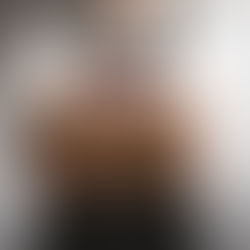In Léonce Rosenberg’s apartment. De Chirico, Ernst, Léger, Picabia at the Picasso Museum
- Rédacteur
- Jan 19, 2024
- 3 min read
An unprecedented dive into the heart of a residence developed between 1928 and 1929 by the merchant and patron Léonce Rosenberg at 75 rue Longchamp in Paris.
The innovative layout of this space, combining masterpieces by major artists from the interwar period with a selection of antique and modern furniture, demonstrated an avant-garde and contemporary conception of decorative arts.
From January 30, 2024, an exceptional exhibition at the Picasso-Paris Museum brings together for the first time some of the paintings and sculptures designed for this unique place, giving them an overall coherence.
Date: from January 30, 2024 to May 19, 2024
Location: Picasso Museum
Desire: Painting, Private collection, Georges Braque, Fernand Léger, Juan Gris, Auguste Herbin, Henri Laurens, Jean Metzinger, Francis Picabia
Léonce Rosenberg, promoter of cubism and abstract painting through his gallery L'Effort moderne, opened in 1918, marked the interwar period by collecting and exhibiting the cream of the avant-garde artistic. The names of Pablo Picasso, Georges Braque, Fernand Léger, Juan Gris, Auguste Herbin, Henri Laurens, Jean Metzinger, Francis Picabia, among others, are associated with his. In 1929, the apartment he set up in the 16th arrondissement of Paris brought together a dozen artists, placing their works in the complex context of the late 1920s, oscillating between the survival of Cubism, a return to inspired practices of tradition, and the emergence of surrealism.

The exhibition, organized into 6 sections, traces the history of the eleven rooms of the apartment designed by Léonce Rosenberg to house his wife and three daughters, Jacqueline, Lucienne, and Madeleine. The collector has adopted the principle of allocating one piece per artist, combining painted canvases with a selection of old and contemporary furniture.
Convinced that Cubism remains the most modern artistic expression of the post-war period, Léonce Rosenberg sought to make it his trademark, actively engaging in the promotion of artists he considered to be leaders.
This involvement is reflected in the decor of his dining room, created in collaboration with the painter Georges Valmier, the Hungarian sculptor Joseph Csaky, and the designer René Herbst, creating a harmonious whole integrated into the luxurious setting of the collector.
The abstractions of Auguste Herbin for the smoking room and the colorful harmonies of Albert Gleizes for Jacqueline's bedroom mark a style that transcends the canons of pre-war Cubism.
In the second half of the 1910s, Léonce Rosenberg also showed himself sensitive to Picasso's borrowings from ancient art. Two exceptional decorative sets within his apartment stand out for their scale and originality in the context of a return to classical tradition: the cycle of “Gladiators”, created by Giorgio de Chirico for the reception hall, and that of “Transparencies” by Francis Picabia designed for Madame Rosenberg’s bedroom. Between quotation and diversion, Giorgio de Chirico's cycle, initially composed of eleven paintings, features naked bodies evoking ancient art in scenes imbued with humor. The works of Gino Severini, initially intended for Jacqueline's bedroom, cultivate a similar parodic vein: ancient ruins and commedia dell'arte characters compose scenes that seem to run in vain.
In an approach close to surrealism, the cycle of “Transparencies” by Francis Picabia, reproduced in a new way in the exhibition, illustrates the enveloping function of the decor and the period's penchant for esotericism. Associated with “Fleurs de coquillages” by Max Ernst and “Universel”, a cosmic painting by Amédée Ozenfant, these works bear witness to a plastic research into the effects of transparency, where the superposition of pictorial layers reveals a hidden world. p>
The financial crisis of 1929/1930 sealed the fate of Léonce Rosenberg, leading to the sale of the apartment and its ruin. This exceptional ensemble is then dispersed. The exhibition, through a scenography evoking Léonce Rosenberg's apartment, will bring together around forty of these works for the first time, while retracing their history with the help of rich documentation (period magazines, extracts from the correspondence of Léonce Rosenberg with the artists, plan of the apartment, photographs...).
Date: from January 30, 2024 to May 19, 2024
Location: < u>Picasso Museum
Desire: Painting, Private collection, Georges Braque, Fernand Léger, Juan Gris, Auguste Herbin, Henri Laurens, Jean Metzinger, Francis Picabia





























Comments